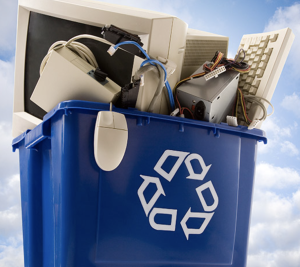As the world faces mounting environmental challenges, managing waste responsibly has become increasingly important. Waste disposal is essential for maintaining public health and hygiene, but how it’s done can significantly impact the environment. Traditionally, waste disposal methods like landfilling and incineration were seen as effective solutions. However, these approaches have led to serious ecological concerns, prompting a shift toward more sustainable disposal techniques. Sustainable waste disposal, rooted in a circular economy, prioritizes reducing waste, reusing materials, and recycling to minimize environmental damage.
Traditional Waste Disposal Methods
Traditional waste disposal systems are based on two main methods: landfilling and incineration.
- Landfills
Landfills have been a dominant waste disposal method for decades due to their simplicity and cost-effectiveness. In a landfill, waste is buried under layers of soil to reduce odors and prevent the spread of diseases. However, landfills pose significant environmental risks, including soil and groundwater contamination from leachate—a liquid formed when waste decomposes and mixes with rainwater. Additionally, landfills are major sources of methane, a potent greenhouse gas that contributes to climate change.
Landfills also consume vast amounts of land, a growing problem in densely populated areas where space is limited. As landfills reach capacity, finding new locations for waste disposal becomes more challenging, leading to pressure on urban and rural land resources. Moreover, once a landfill site is full, the land cannot be easily repurposed due to long-term pollution risks.
- Incineration
While incineration can significantly reduce waste volume and has the potential to recover energy, it also generates harmful emissions, including carbon dioxide, sulfur dioxide, and dioxins—pollutants that can have serious health and environmental consequences. Incineration facilities require expensive air pollution control technologies to manage these emissions, which adds to operational costs.
Visit:
Though incineration produces energy, it can discourage recycling by destroying recyclable materials, thus reducing resources available for reuse. Additionally, the incineration of plastics, metals, and other materials can create toxic ash, which requires further disposal, often ending up in landfills.
The Drawbacks of Traditional Waste Disposal
The reliance on landfills and incineration has led to significant ecological and health concerns:
- Greenhouse Gas Emissions: Landfills produce methane, while incineration releases carbon dioxide, both of which contribute to global warming.
- Resource Waste: Traditional waste methods don’t encourage recycling, leading to the depletion of natural resources.
- Pollution: Landfills and incineration can contaminate air, soil, and water, posing health risks to nearby communities.
- Space and Cost: Landfills require large amounts of land, which is increasingly scarce, and incineration facilities are costly to operate.
These drawbacks highlight the need for alternative waste management strategies that prioritize environmental protection and resource conservation. Sustainable disposal methods offer solutions to these challenges, supporting the shift from a linear to a circular economy.
What is Sustainable Disposal?
Sustainable waste disposal is based on the principle of the circular economy, which aims to minimize waste, reuse materials, and recycle resources. This approach is founded on the “three Rs”: reduce, reuse, and recycle. Sustainable disposal methods seek to eliminate or greatly reduce the waste that ends up in landfills or incinerators, instead promoting processes that conserve resources and reduce environmental impact.
Sustainable disposal methods include recycling, composting, waste-to-energy technologies, and innovative policies like extended producer responsibility.
Sustainable Disposal Techniques
- Recycling
Advanced recycling technologies now allow for the recycling of more complex materials, including electronics and textiles. For example, chemical recycling breaks down plastics into their base components, making it possible to recycle materials that would otherwise be discarded. - Composting
This compost can be used as fertilizer, supporting soil health and agriculture. Composting reduces landfill waste and methane emissions, making it an environmentally friendly alternative to organic waste disposal. Community composting programs are growing in popularity, helping to reduce organic waste at the local level. - Waste-to-Energy (WTE)
Waste-to-energy is a process where waste materials are converted into energy through methods like incineration, gasification, or anaerobic digestion. While similar to traditional incineration, WTE facilities are designed to minimize emissions and optimize energy recovery. By generating heat or electricity from waste, WTE reduces the need for fossil fuels and helps to divert waste from landfills. Though not entirely pollution-free, advances in WTE technology are making it a more sustainable option compared to traditional incineration. - Extended Producer Responsibility (EPR)
Extended Producer Responsibility is a policy that holds producers accountable for the entire lifecycle of their products, from design to disposal. EPR encourages companies to make products that are easier to recycle or reuse and to manage take-back programs for their products after consumer use. This approach incentivizes sustainable product design and ensures that waste disposal responsibilities are shared between producers and consumers. - Closed-Loop Systems
A closed-loop system is a manufacturing model where waste from production is fed back into the system as raw material. This approach promotes resource efficiency and eliminates the need for new materials. Industries such as packaging, textiles, and electronics are exploring closed-loop systems to reduce waste and reliance on raw resources. For example, some companies are now designing modular electronic devices that can be repaired or upgraded, extending product lifespans and reducing e-waste through ewaste in Bangalore.
Comparing Traditional and Sustainable Disposal
The primary differences between traditional and sustainable disposal methods lie in their environmental impacts, resource usage, and long-term feasibility:
- Environmental Impact: Traditional disposal methods often harm the environment through emissions and contamination, while sustainable methods aim to mitigate these effects.
- Resource Conservation: Sustainable disposal prioritizes conserving resources by promoting recycling, reducing reliance on raw materials, and encouraging waste reduction, while traditional methods often waste these resources.
- Cost and Space: Sustainable methods can be more efficient over time by reducing the demand for landfill space and the need for costly incineration plants.
Traditional methods may still have roles in some contexts, but a sustainable disposal approach is increasingly necessary to combat the ecological impacts of waste.
In Last
Transitioning from traditional waste disposal to sustainable methods is essential for addressing environmental challenges and fostering a healthier planet. Traditional disposal methods like landfilling and incineration are not only harmful but increasingly unsustainable. By adopting sustainable disposal techniques—such as recycling, composting, waste-to-energy, and closed-loop systems—societies can minimize waste, reduce pollution, and conserve valuable resources. Embracing sustainable waste disposal is a critical step toward a circular economy where materials are continuously reused, promoting environmental preservation and long-term resource security.







